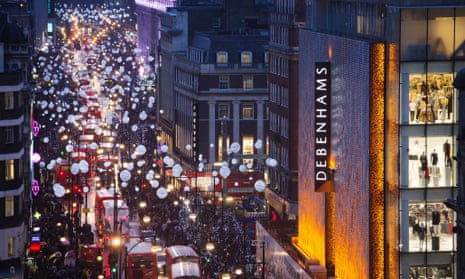The windows of Selfridges are a fairytale delight and exceptional lights are promised for Bond Street. But, for the second year running, London’s showcase West End shopping streets will not be hosting its almost traditional Very Important Pedestrian (VIP) day in the run up to Christmas, during which all motor vehicles would be banned.
Just as last year, the reason is that the 600 retailer members of the New West End Company (NWEC), business improvement district think their marketing funds better spent on different things. Just as last year, this is a shame. The beauty of VIP Days is that they’ve provided a glimpse of what Oxford Street, Bond Street and Regent Street could be like if the only traffic they contained was on foot.
Such glimpses make a persuasive case for full pedestrianisation, but would that be the best solution to the area’s mounting problems with congestion, overcrowding, noise, road safety and air pollution? London Assembly Lib Dem Stephen Knight believes it is and has made his case in a 20-page report.
He argues that VIP Day should be restored as the first stage of a journey towards making every West End day a VIP day. He’d then close Oxford Street to all motor vehicles except a “high frequency, zero emission shuttle bus” running between Marble Arch and Tottenham Court Road. The arrival of Crossrail in 2018 would, argues Knight, create both the need and the opportunity to then move towards full pedestrianisation by 2020.
The NWEC thinks that would be a step too far. However, its chief executive Richard Dickinson is very clear that businesses and visitors alike want to see “a major shift” in the way Oxford Street works and that “a far greater focus needs to be given to the pedestrian by the time Crossrail opens in 2018”. Conversations about this with Westminster City Council and Transport for London (TfL) are already taking place. Dickinson describes these as “extremely constructive”.
Everyone seems to agree that major change is needed if Oxford Street is not to suffer a decline. The glamour and glitz of London’s number one high street is hard to beat, but its allure is being dimmed by jam-packed pavements, diesel fumes from buses and taxis and an injury rate among pedestrians which, though it has fallen over a ten year period according to TfL figures, remains unacceptably high.
Meanwhile, modern malls like the Westfields in Stratford and Shepherd’s Bush are providing many with a more comfortable and convenient shopping experience. Something must be done to restore what I think of as the London romance of Oxford Street. What, exactly, should that something be?

Comments (…)
Sign in or create your Guardian account to join the discussion